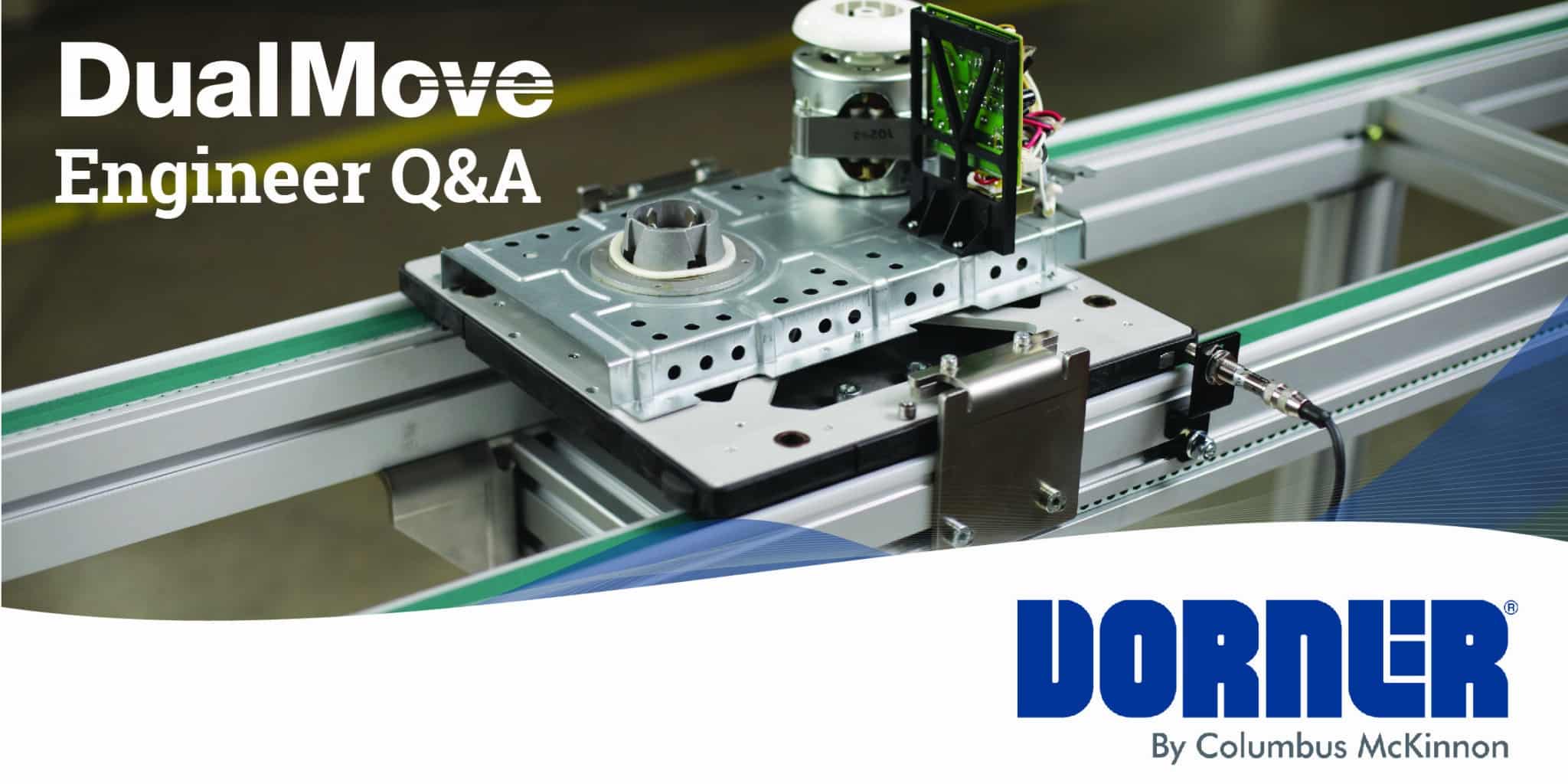
Discussion with Dan E., Anete F., & Marco P.
As the latest addition to Dorner’s line of pallet system conveyors, the DualMove was designed to bridge the gap between belted precision conveyors and the high-tech Edge Roller pallet conveyors. The new DualMove system offers exceptional accuracy and ease of integration for various applications, including automated assembly of appliances, consumer goods, and more!
Throughout the design and implementation process, Dorner’s new product development team and product manager worked closely together to improve upon the previous 2200 Precision Move Pallet System design and introduce new innovations to the DualMove, allowing it to better serve the needs of an ever-evolving manufacturing industry.
This article features an in-depth discussion with key engineers Dan E. and Anete F., and Dorner’s product manager, Marco P. offering insights into the design process of the new DualMove Pallet System, its key features, and how it will better serve customers today and in the future.
Q: What are some of the key features and improvements of the DualMove Pallet system compared to its predecessor?
The higher capacity was the first feature to affect the entire design process. We wanted this system to handle a wider range of weights and product sizes, so we needed to significantly adjust the overall construction, belting, and modules to accommodate that increased capacity. In the DualMove conveyor, all structural parts previously made of plastic were converted to metal, significantly increasing the conveyor’s durability and allowing for larger system configurations. The previous T5 timing belt was also upgraded to a larger and more robust T10 timing belt.
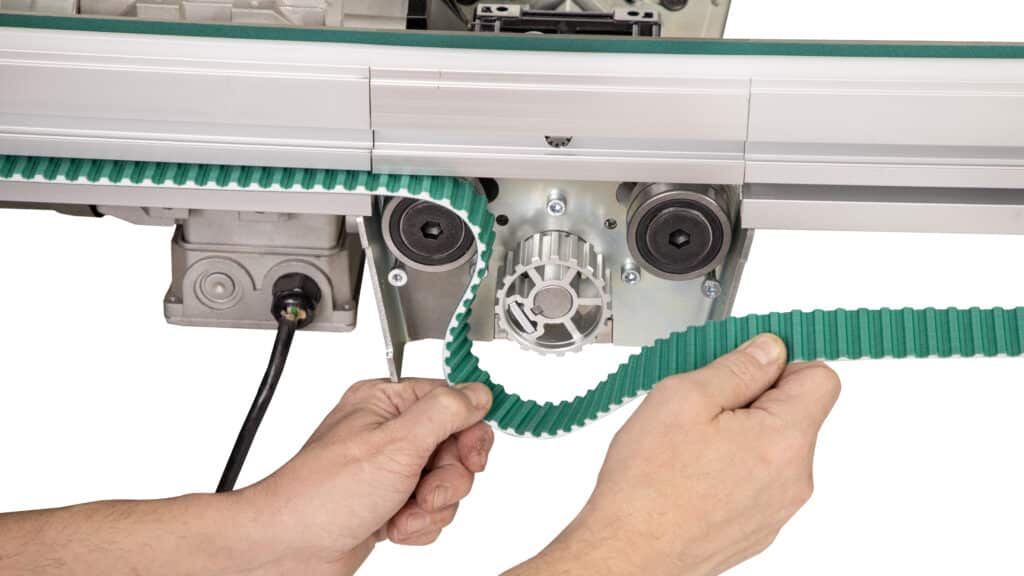
In conjunction with the heavier-duty construction, we developed a new aluminum extrusion frame to handle higher loads while offering T-Slot mounting for industry-standard accessories and parts. Additionally, the new extrusion profile was adjusted to allow for the belt to be removed from the side, making belt changes significantly easier for customers to do in the field. One of the most critical aspects of the frame – and the design of the DualMove as a whole – is that it is entirely modular and compatible with older conveyor models and our older modules. This means it’s easier than ever to expand a conveyor line to accommodate growth or new processes, add or remove modules, and reconfigure it with the evolving needs of an operation.
Following the need for easy maintenance and reconfiguration, the DualMove also has two new patent-pending features: breakaway guiding and a rack and pinion tensioning system. The breakaway guiding was explicitly designed to make it easier to adjust the field’s conveyor configuration without disassembling the entire conveyor. The new belt tensioning system also reduces maintenance time and costs by extending the belt’s lifetime and allowing customers to re-tension it as the belt stretches throughout its lifetime.
Q: What specific challenges or issues were addressed in the redesign process of this pallet conveyor system?
A key area we wanted to address was the maintenance of the conveyor. The new, robust design will help to reduce part wear and downtime; the belt tensioning system will significantly extend the lifetime of the conveyor belts. The previous 2200 Precision Move Pallet System did not include a tension adjustment system. If the belt stretched, it needed to be replaced or risk drive slippage and fluctuations in the accuracy of product positioning. Not only does the patent-pending tension system mean belts are replaced less frequently, but it also reduces customer maintenance time and costs. On the production side, this tensioning system allows Dorner’s team more flexibility in the system’s construction. It means we can produce the same precision conveyor technology with reduced cost for end users.
Additionally, the new weight capacity required a redesign of all modules included with the DualMove. Where previously the primary difference in lifting modules was a larger mount as the pallets increased in size, the DualMove has three different platforms with different actuator sizes for the modules to cover the wider range of size and weight capacity. The biggest challenge was finding the breakpoints between each platform. We wanted to ensure we weren’t over-designing the smaller sizes for the lighter-weight applications and not under-designing the larger, high-load sizes.
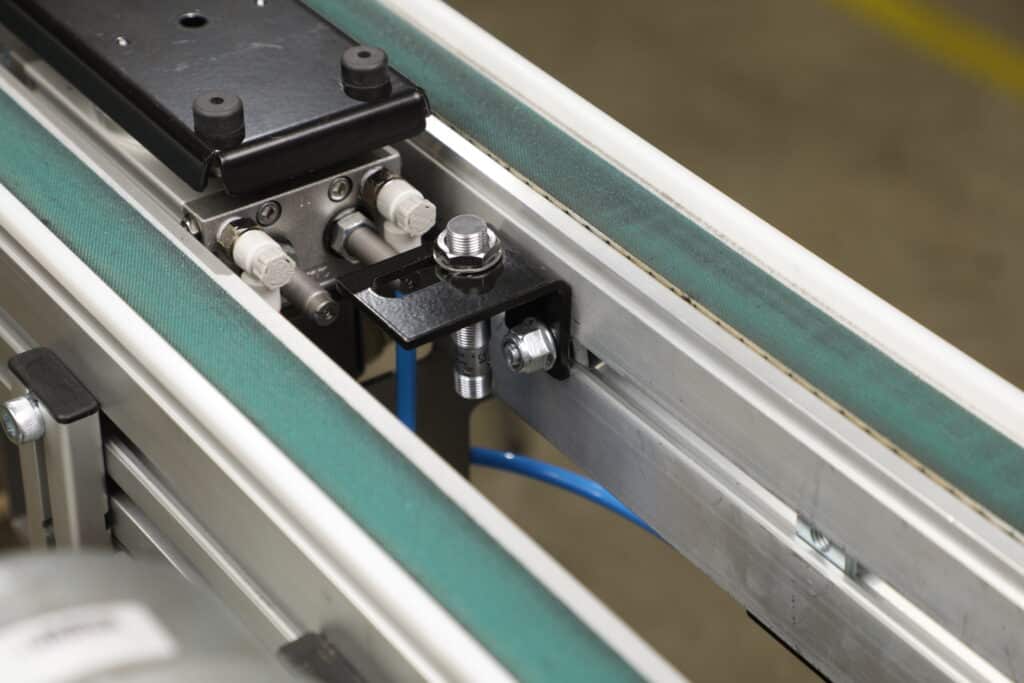
Tripling the number of sizes of modules offered for DualMove also presents challenges in production, both in cost and lead time. So, we made it a goal to standardize many parts within the modules, enabling them to be used interchangeably in multiple modules. This is another way we minimized costs and lead times for this system.
Q: How does the DualMove Pallet System enhance efficiency and productivity in material handling operations?
The robust conveyor design and higher capacity belt allow for more extended conveyor configurations, meaning fewer conveyors are used in a system, reducing tails and motors /drive sections, which reduces cost. Additionally, with improved durability and part longevity, downtimes and breakdowns will drop significantly, lowering maintenance costs and improving productivity.
One of the most significant boosts to productivity that this new conveyor design offers is the increased speed capability. The DualMove offers faster-than-ever belt speeds for a belted pallet system, which will help our customers accelerate their production lines and increase product throughput.
Q: Were there any innovative technologies or materials incorporated into the redesign that contribute to the system’s performance?
The DualMove’s predecessor, the 2200 Precision Move Pallet System, was Dorner’s first pallet conveyor, which was developed in 2017. Since then, we have developed many new conveyance innovations, which were incorporated into this new design. For example, the rack and pinion tensioning system has been used on our industrial conveyors for years, but the DualMove is the first conveyor of its kind with this type of belt tensioning system. We also wanted to ensure the tension system was a standard offering for the DualMove, so we adjusted the design to ensure its compatibility with the conveyor’s end drive and mid-drive configurations.
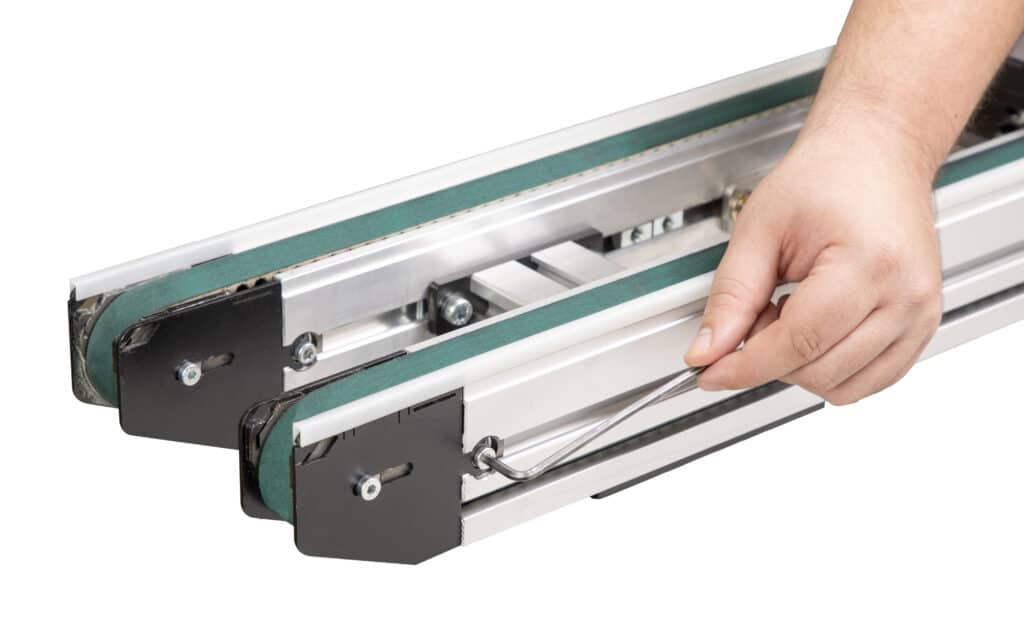
The DualMove Lift and Transfer modules were also designed with drives and conveyor sections from our line of ERT conveyors, drastically changing the transfer modules’ overall profile. This means the needed clearance under the conveyor is much smaller. The smaller height makes these conveyors easily stackable for over-under configurations, further reducing the footprint of a production system.
We even offer a new pin splice belt option, to simplify belt replacement when the conveyor is embedded inside equipment, with no access to the standard side belt removal slot. The pin splice allows customers to replace the belt without needing to remove anything mounted to the system or disassemble the conveyor.
Finally, we are utilizing a new and innovative material for the DualMove’s wear strips. These new easy-to-replace, static conductive wear strips are lower in friction than the previous version, which increases load capacity and the efficiency of the conveyor.
Q: What kind of testing and validation processes were undertaken to ensure the reliability and performance of the redesigned system?
Dorner performs extensive testing on our new conveyor systems, modules, and parts; DualMove is no exception.
For each model of the DualMove, a durability test is performed to ensure the system runs smoothly at the maximum rated capacity for at least 2000 hours. During this test, the conveyor is continuously monitored for signs of premature wear to the belt, drive parts, pallet, and frame. Particularly when redesigning a previous conveyor system into a new product like the DualMove, durability testing is vital to ensure the design holds up to the increase in weight and size while still performing as needed for customers.
Every module is also tested for durability and accuracy. With separate size platforms for the DualMove modules, this involved testing all modules with their maximum capacity and measuring their performance to ensure lifting, turns, and transfer functions were designed for accurate product positioning during conveyor operation.
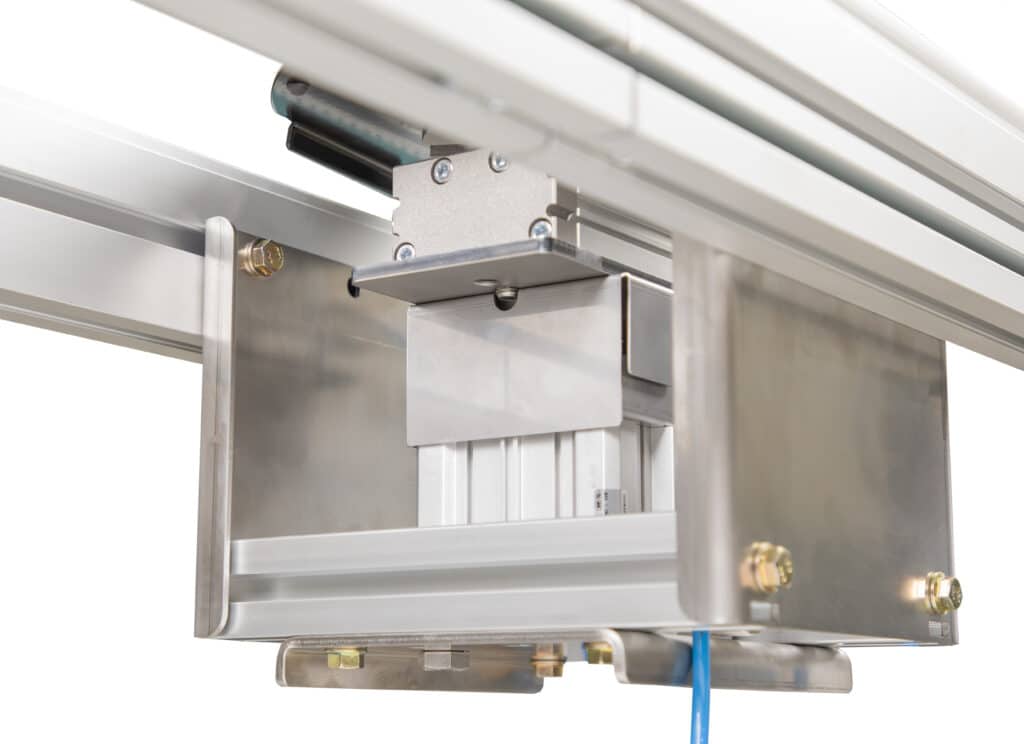
Throughout the design and testing process, we also watch for any potential safety issues, such as pinch points, conveyor stability, and noise output. If pinch points are identified, the design is adjusted to eliminate or cover the hazard so customers and operators can work around the machine and perform maintenance safely. Finally, noise output testing is performed to measure the sound levels at three different locations along the conveyor at various belt speeds to ensure the sound output is not hazardous for long-term exposure that workers might experience on the production floor.
Q: Was there any specific customer feedback that influenced the redesign of this pallet conveyor?
We received three main pieces of feedback from customers regarding the belted pallet system: make the conveyor more modular and cross-compatible with old models, make it easier to maintain and replace the belting, and increase the weight capacity, especially for corner modules.
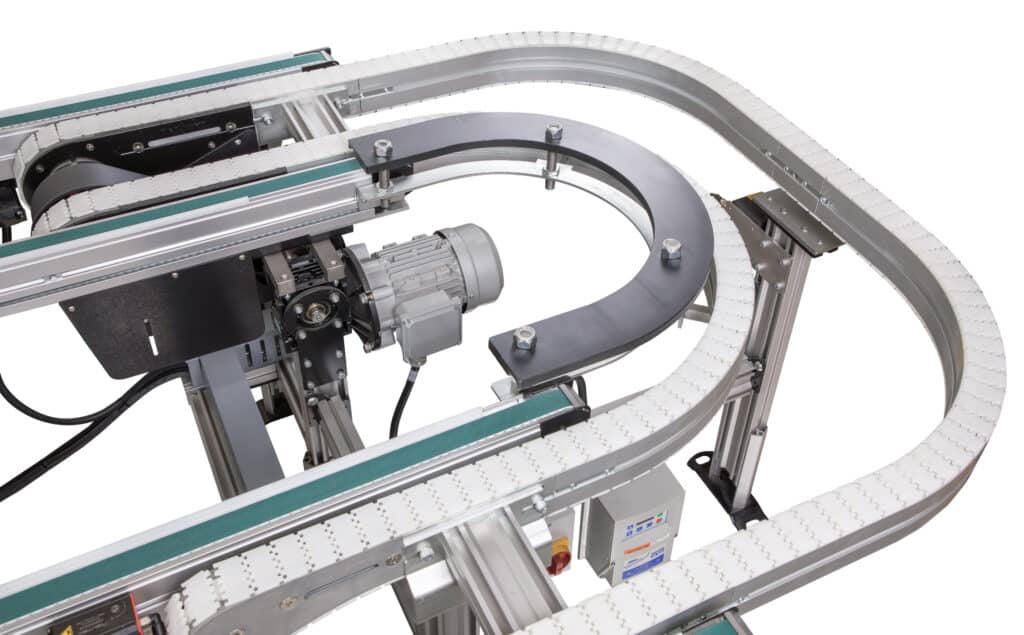
The corner modules of the DualMove proved to be a challenge for us. When pallets turn around the corner module, it applies a greater force to the outer belt. If the previous conveyor model was running at maximum pallet capacity, the belt would be driven out of its track and misaligned. Because of this, the Precision Move Pallet System corners were rated at a lower load than the pallet rating. With the DualMove’s heavier and thicker timing belt, the corner and merge modules are now rated to transport the full rated pallet weight accurately and efficiently around corners.
Q: What are the integration capabilities of the DualMove with other conveyors or automation systems?
The manufacturing industry is constantly evolving, and businesses must adapt to changes in demand, new technology, and updated industry regulations. Conveyors are the base of every automated manufacturing line, so we wanted to build a conveyor system that can offer that flexibility to customers who are always looking to the future. The DualMove is entirely modular, meaning a new system can integrate into a customer’s existing manufacturing line while also allowing them to expand in the future and add new lines seamlessly. Each piece of this pallet conveyor was designed to fit together perfectly, like Legos, and be utterly reconfigurable as a customer’s needs change.
Moreover, various lifting modules ensure precise product placement and positioning, allowing robotics and automation technology to interface with products accurately. This easy integration allows manufacturers to implement more automation into their production lines, further helping them improve efficiency, production throughput, and product quality.
Conveyors Designed for the Future
Our commitment to providing companies from multiple industries with quality, precision conveyance has been the driving force that has positioned Dorner as the leader in conveyance technology for nearly 60 years. Through new, innovative designs like the DualMove, we continue to serve our customers and help carry manufacturers into the future.
Click here to learn more about DualMove and Dorner’s complete line of pallet conveyor systems or contact us for help with your conveyance needs.





